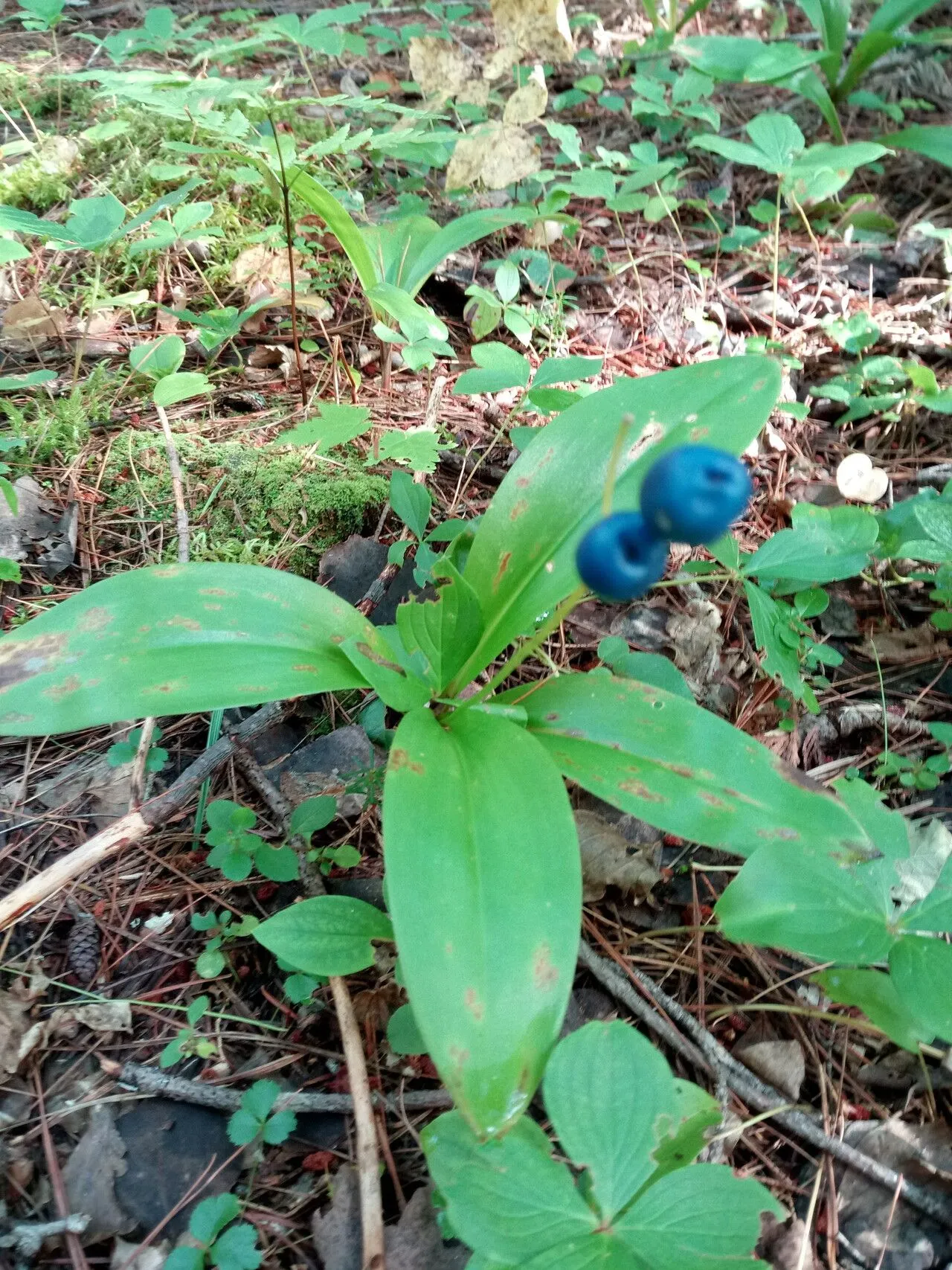
Author: (Aiton) Raf.
Bibliography: Atlantic J. 1: 120 (1832)
Year: 1832
Status: accepted
Rank: species
Genus: Clintonia
Vegetable: Unknown
Observations: C. & E. Canada to NC. & E. U.S.A.
Corn-lily, scientifically known as Clintonia borealis, is a distinguished member of the Liliaceae family. This enchanting plant was first documented in Atlantic J. (Volume 1, page 120) in the year 1832, and the taxonomy was later attributed to (Aiton) Raf.
Native to the cool, temperate regions of North America, corn-lily thrives in the lush woodlands stretching from Central and Eastern Canada down to North Carolina, and extending through the Eastern United States. The plant is particularly noted for its ability to flourish in shaded, moist environments, often carpeting the forest floor with its lush foliage.
Corn-lily is easily recognized by its bright green, lance-shaped leaves that form a basal rosette. Each leaf can reach up to ten inches in length, creating a verdant ground cover. During the spring, it sends up slender stalks that give rise to delicate clusters of bell-shaped flowers. These flowers, typically of a creamy white or pale yellow hue, attract a variety of pollinators, adding to the biodiversity of their habitats.
Following the flowering stage, the fruits of the corn-lily appear as small, striking blue berries, adding to the plant’s visual interest and ecological value. These berries, however, are not for human consumption but play a vital role in the diet of various wildlife species, contributing to the ecological balance of the forested regions.
Corn-lily not only enhances the natural beauty of its environment but also plays a crucial role in stabilizing the soil and maintaining the integrity of forest ecosystems. Its presence is indicative of a healthy, undisturbed woodland, making it a significant species for naturalists and ecologists monitoring forest health.
In sum, Clintonia borealis is more than just a pretty woodland flower; it’s a vital component of its ecosystem, supporting wildlife and maintaining the balance of nature in the forests of North America.
Eng: blue bead-lily, bluebead, corn-lily, yellow clintonia, bluebead lily, clinton lily, corn lily, poisonberry
Swe: gult skogsöga
Fra: clintonie boréale, lis-boréal
En: Corn-lily, Yellow clintonia, Blue bead-lily, Bluebead, Yellow Bluebead-Lily, Clinton lily, Bluebead lily, Corn lily, Poisonberry
Fi: Klintonia
Fr: Clintonie boréale, Lis-boréal
Sv: Gult skogsöga
Taken Sep 10, 2021 by Tim Ouimet (cc-by-sa)
Taken Jul 27, 2021 by Mihaela Machiodache (cc-by-sa)
Taken Jul 30, 2020 by Kal Soong (cc-by-sa)
Taken Aug 27, 2020 by Charlotte Thivierge (cc-by-sa)
Taken Aug 25, 2020 by Bonnie Devine (cc-by-sa)
Taken Aug 16, 2021 by Kali Cloe (cc-by-sa)
Taken Jun 5, 2021 by Valerie Lapointe (cc-by-sa)
Taken Jul 30, 2020 by Kal Soong (cc-by-sa)
Taken Aug 6, 2021 by Valerie Comeau (cc-by-sa)
Taken Aug 27, 2021 by Yvan Gagnon (cc-by-sa)
Taken Jul 20, 2014 by EOL − Kent McFarland (cc-by-nc)
Taken Jul 19, 2014 by EOL − Charlie Hohn (cc-by-nc)
Taken Jun 9, 2021 by Yvonne Pandke (cc-by-sa)
Taken Jul 22, 2022 by Bergie (cc-by-sa)
Taken Jul 30, 2020 by Kal Soong (cc-by-sa)
Taken May 29, 2021 by Lucie Claude (cc-by-sa)
Taken May 29, 2021 by Amanda Kelly (cc-by-sa)
Taken May 30, 2021 by Mylaine Dionne (cc-by-sa)
Taken Jun 3, 2021 by Émilie Morissette (cc-by-sa)
Taken Jul 25, 2021 by Pierre Boisvert (cc-by-sa)
Taken Jan 28, 2020 by Dean Dean (cc-by-sa)
Taken May 31, 2003 by EOL − Steven J. Baskauf (cc-by-nc-sa)
© copyright of the Board of Trustees of the Royal Botanic Gardens, Kew.
Family: Myrtaceae Author: (F.Muell.) K.D.Hill & L.A.S.Johnson Bibliography: Telopea 6: 402 (1995) Year: 1995 Status:…
Family: Rubiaceae Author: Pierre ex A.Froehner Bibliography: Notizbl. Bot. Gart. Berlin-Dahlem 1: 237 (1897) Year:…
Family: Sapindaceae Author: Koidz. Bibliography: J. Coll. Sci. Imp. Univ. Tokyo 32(1): 38 (1911) Year:…
Family: Asteraceae Author: A.Gray Bibliography: Pacif. Railr. Rep.: 107 (1857) Year: 1857 Status: accepted Rank:…
Family: Fabaceae Author: Medik. Bibliography: Vorles. Churpfälz. Phys.-Ökon. Ges. 2: 398 (1787) Year: 1787 Status:…
Family: Aspleniaceae Author: (Cav.) Alston Bibliography: Bull. Misc. Inform. Kew 1932: 309 (1932) Year: 1932…